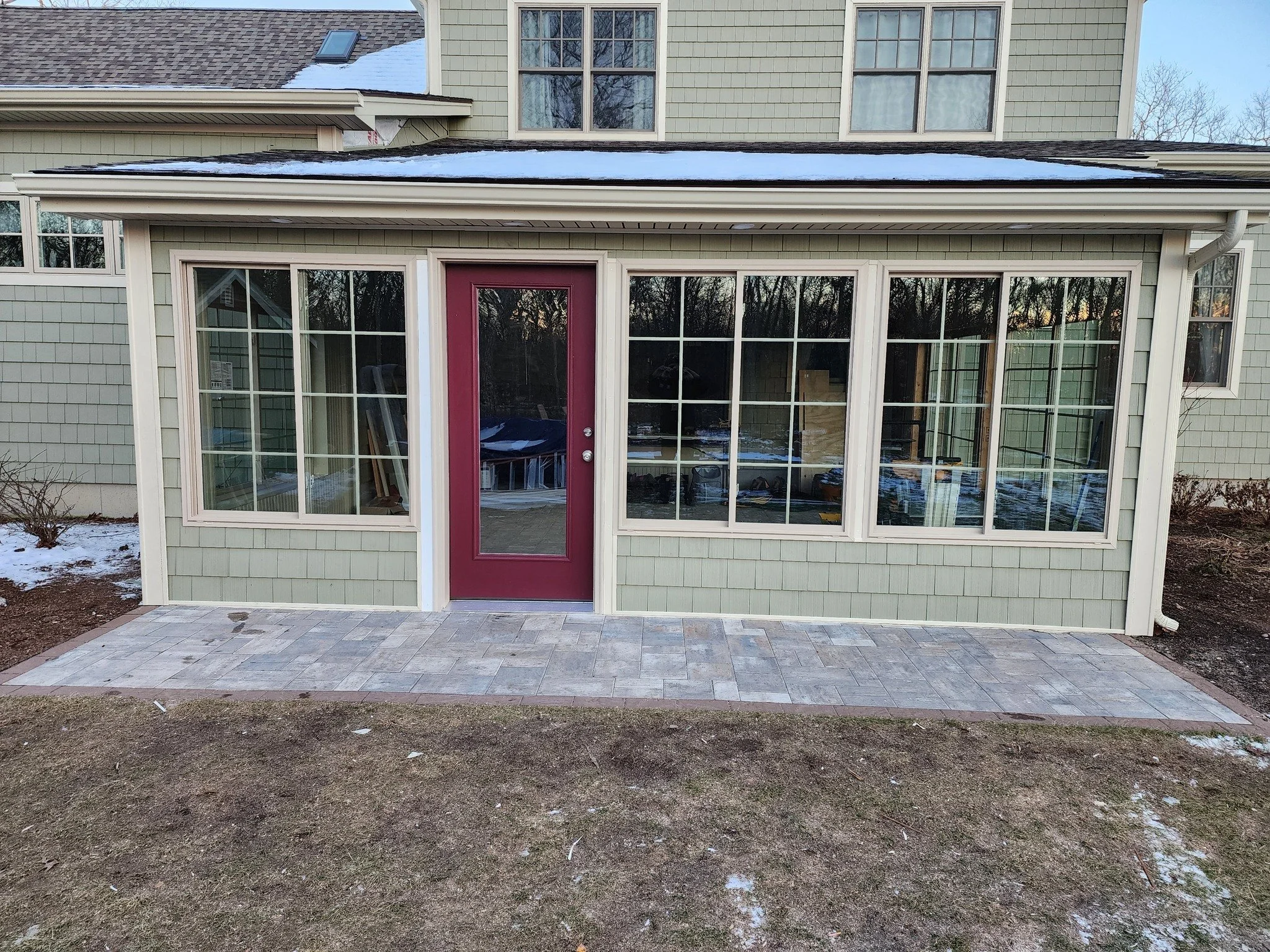How to Choose the Right Type of Home Addition for Your Needs
Adding a home addition to your Connecticut or Rhode Island home is an exciting way to enhance your living space, improve functionality, and increase your property value. However, choosing the right type of home addition can feel overwhelming, especially with so many options available. Whether expanding to accommodate a growing family or creating a cozy retreat to enjoy Connecticut's seasons, this guide will help you navigate the decision-making process.
Here’s what you need to know about the types of Connecticut home additions and how to select the one that best fits your needs.
1. Understanding Your Needs and Goals
The first step in choosing the right home addition is identifying why you want to expand your home. Common reasons you may want to add a home addition include:
Space Requirements: Do you need extra bedrooms, a dedicated workspace, or storage space?
Functionality: Are you seeking a space to entertain, relax, or enhance your daily routines?
Lifestyle Changes: Is your family growing, or are you planning for multi-generational living?
By clearly defining your goals, you can narrow down your options and focus on additions that meet your needs.
2. Types of Connecticut Home Additions
Room Additions
A room addition is one of the most versatile options for increasing your living space. Whether it’s a bedroom, bathroom, or home office, these additions integrate seamlessly into your existing layout.
Best for: Growing families, homeowners needing extra bedrooms, or those looking to add a private retreat.
Considerations: Ensure the addition aligns with your home’s architectural style and meets local building codes in Connecticut.
Sunrooms
If you want to bring the outdoors inside, consider adding a sunroom in CT. These light-filled spaces are perfect for enjoying Connecticut's scenic seasons without worrying about bugs or unpredictable weather.
Best for: Homeowners who want a relaxing retreat, entertainment space, or a year-round connection to nature.
Considerations: Choose between three-season or four-season sunrooms based on how you plan to use the space.
Fun Fact: Four-season sunrooms can be designed for year-round comfort with proper insulation and heating, making them a popular choice in Connecticut's climate.
In-Law Suites
As multi-generational living becomes more common, in-law suites are a practical way to create a private, self-contained space for relatives. These often include a bedroom, bathroom, and kitchenette.
Best for: Families caring for aging parents or those who frequently host extended family.
Considerations: Check local zoning laws to ensure compliance for creating an independent living space.
Kitchen Expansions
The kitchen is often the heart of the home, and expanding it can transform how you cook, entertain, and connect with family. A bump-out or full kitchen addition can create room for an island, pantry, or additional seating.
Best for: Homeowners who love to cook, entertain, or simply need more functional kitchen space.
Considerations: Plan for additional plumbing and electrical work during the design phase.
Garage Conversions
If you have an underutilized garage, converting it into a livable space can add functionality to your home. Popular uses include home gyms, guest suites, or hobby studios.
Best for: Those seeking cost-effective ways to add square footage without building an entirely new structure.
Considerations: Proper insulation and ventilation are crucial for comfort and functionality.
Second-Story Additions
Building up instead of out is a great solution for homes with limited yard space. A second-story addition can nearly double your living space by adding bedrooms, bathrooms, or even an entirely separate apartment.
Best for: Families needing significant additional space without sacrificing outdoor areas.
Considerations: Structural reinforcements may be required to support the added weight.
Bump-Out Additions
A bump-out is a small-scale addition that enlarges an existing room, such as a bathroom or kitchen. Compared to full-scale additions, bump-outs are cost-effective and quicker to build.
Best for: Homeowners looking to enhance functionality without a major renovation.
Considerations: Bump-outs may require foundation work depending on their size and placement.
3. Factors to Consider When Choosing a Home Addition
Your Home’s Layout and Style
Ensure the addition complements your home’s existing structure and design. For example, if you have a colonial-style home in Connecticut, a sunroom with classic lines and neutral finishes may blend seamlessly.
Budget
Home additions vary significantly in cost. A bump-out addition may cost $10,000–$20,000, while a full in-law suite could exceed $100,000. Establish a realistic budget and prioritize your must-have features.
Permits and Zoning Laws
Connecticut has specific zoning regulations that may impact the size, placement, and type of addition you can build. Work with a contractor familiar with local laws to ensure compliance.
Energy Efficiency
Consider incorporating energy-efficient materials and features. Sunrooms, for example, can be equipped with high-performance glass and proper insulation to maintain comfort and reduce heating and cooling costs.
Future Value
Think about how the addition will impact your home’s resale value. Adding a sunroom in Connecticut, for instance, can increase your home’s appeal to buyers seeking a peaceful, light-filled space.
4. Benefits of Adding a Sunroom in CT
Sunrooms are particularly popular among Connecticut homeowners for their ability to enhance both functionality and aesthetic appeal.
Connection to Nature: Enjoy the changing seasons without stepping outside.
Versatility: Use the space as a reading nook, dining area, or indoor garden.
Energy Savings: Modern sunrooms often incorporate energy-efficient designs that lower utility costs.
Increased Home Value: Sunrooms are considered a desirable feature by many buyers.
5. Working with a Professional Contractor
Selecting the right contractor is critical for a successful home addition project. A professional home addition contractor can:
Help you choose the best type of addition for your home and lifestyle.
Navigate Connecticut’s zoning and permitting requirements.
Design and build a space that blends seamlessly with your existing home.
Conclusion
When choosing the right type of home addition, focus on your unique needs, lifestyle, and budget. From versatile room additions to tranquil sunrooms, Connecticut homeowners have many options to enhance their living spaces. By understanding the types of additions available and working with a skilled contractor, you can ensure your project adds both functionality and value to your home.
Ready to get started? At Creative Enclosures, we specialize in custom home additions that bring your vision to life. Whether you’re dreaming of adding a sunroom in CT or creating an in-law suite, we’re here to guide you every step of the way. Contact us today for a consultation!

